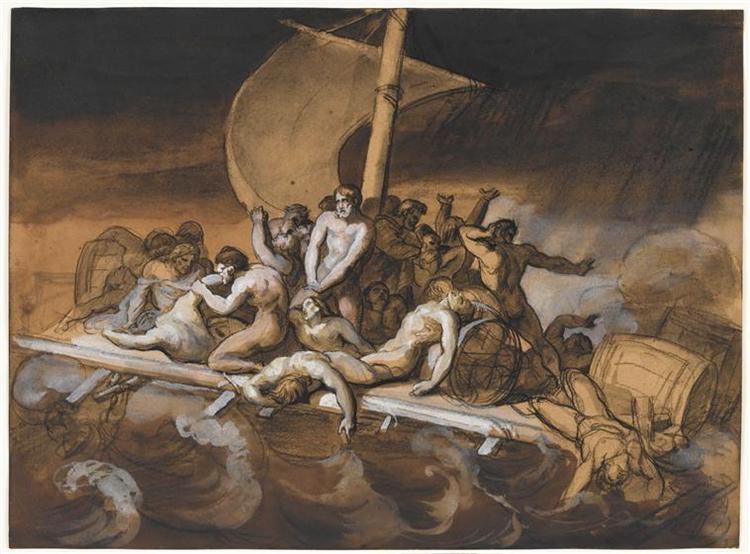Description
The work "Canibalism Scene for the Balsa de la Medusa" by Théodore Géricult is a powerful visual testimony that captures a moment of unstrificable despair and human crudeness. Painted between 1818 and 1819, this work is a response to the wreck of the frigate "Méduse", a tragic event that shocked France in 1816. Géricult, a precursor of romanticism, uses this tragedy not only to examine the human condition, but also to challenge the notions of morality and dignity in extreme situations.
When observing the composition, one feels overwhelmed by the immediacy and tension of the scene. The disposition of the bodies, stacked in a state of despair, highlights the struggle between life and death. The characters, although decomposed and mostly indistinguishable, are the essence of visceral suffering. Géricault is not limited to showing horror; It pushes us to confront it, getting involved in a narrative where the ineffable becomes palpable. The gestures of men who cling to life, together with the bodies of those already consumed, create a sense of urgency and tragedy that is difficult to ignore.
Color plays a fundamental role in the atmosphere of the work. The palette of dark tones, with deep brown and gray, evokes the oppressive and bleak atmosphere of the drifting raft, while the flashes of light that illuminate certain faces and bodies create a dramatic contrast. This use of chiaroscuro not only gives volume to bodies, but also highlights horror and hopelessness.
A remarkable aspect of painting is Géricault's choice to represent human faces in so extreme situations. The expression of men, some of which seem to be in a state of madness or resignation, adds a powerful emotional load to the scene. The look of the characters, in particular, transmits a mixture of terror and longing, turning the work into a mirror of the fragility of human existence when facing the inevitable.
In addition, the work is a prominent example of Géricault's interest in anatomy and physiology, inheritance of his training in sculpture. His meticulous attention to the anatomical details of the bodies, the saturation of suffering in their muscles and the deterioration of their faces, contributes to the visceral nature of the work. Géricault studied corpses and made numerous sketches of his study, which reinforces the authenticity of the representation.
In its historical context, "cannibalism scene for the balsa of the jellyfish" also invites a broader reflection on morality and ethics in times of crisis. The story behind the wreck reveals not only the tragedy of human destiny, but also the failures in the political and leadership system of the time, which becomes an implicit criticism in painting. Géricault positions himself as a chronicler of his time, pointing out injustices and creating a dialogue about the human condition.
When observing this work, the viewer cannot avoid feeling challenged to reflect on the limits to which the human being can reach. "Canibalism scene for the balsa of the jellyfish" is not just a painting; It is a visceral cry that resonates in collective memory, reminding us of the fragility of civilization and darkness that can stalk under the light of reason. Géricault, through his unwavering respect for humanity in his most vulnerable state, remains a lighthouse of reflection on what he means to be human in the midst of chaos.
KUADROS ©, a famous paint on your wall.
Hand-made oil painting reproductions, with the quality of professional artists and the distinctive seal of KUADROS ©.
Reproduction service paintings With a guarantee of satisfaction. If you are not completely satisfied with the replica of your painting, we refund your money 100%.

